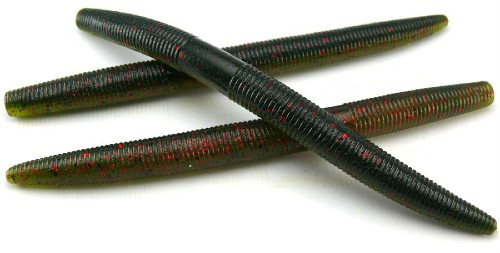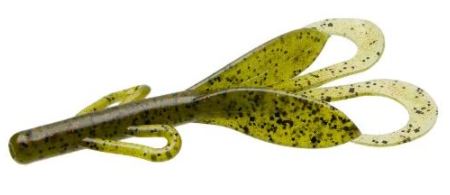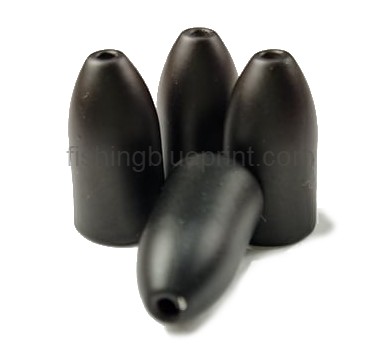Fishing Texas Rig Guide | Texas Rig Worm Setup and More!
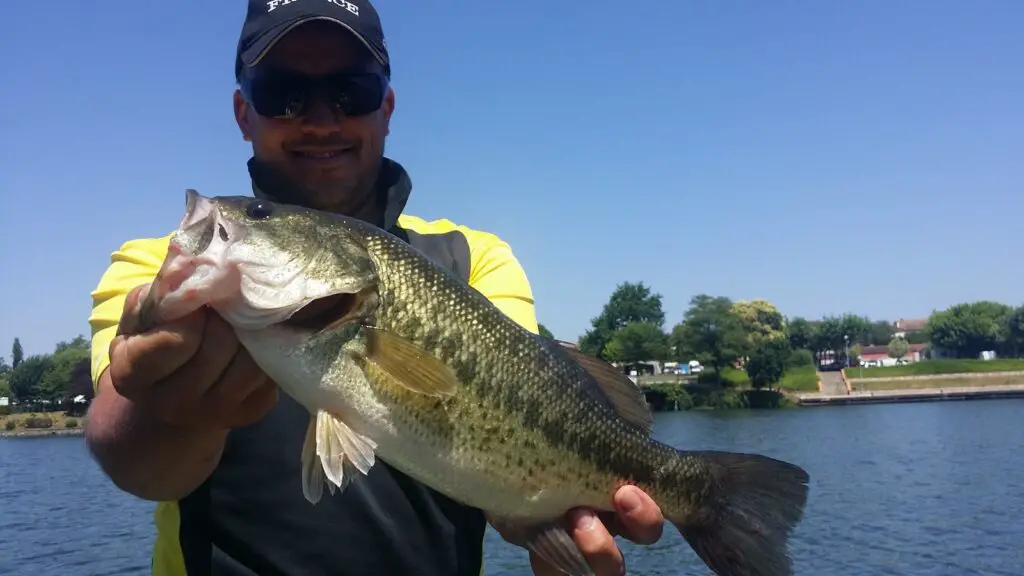
Hey friend,
Thanks for stopping by…
If you are desperately trying to catch more fish, but consistently having trouble getting hung up on the bottom, then you’re probably flooded with tons of ideas of how to prevent it…
However, it keeps happening over and over again doesn’t it?…
I can remember it happening to me as well…
I’m here to tell you that it’s NOT your fault.
So Let Me Ask You A Question…
What if there was a way you could quickly and easily catch more bass, stay extremely weedless, and best of all – avoid getting snagged while fishing around any type of cover?
Not To Pry, But Here’s Another Question…
What if this technique let you cast your bait farther and with greater accuracy?
What if this technique helped prevent you from wasting valuable time and increases your cast-to-catch ratio when you’re on the water?
Would You Be Interested? Well, Here’s Good News…
Let me introduce you to the Texas rig. You probably heard of it.
If you’re like me, you probably may have asked yourself, what is a Texas rig for fishing? The Texas rig setup is a bullet weight plus a worm hook. The hook point is solidly embedded in the body of your bait, so you’re encouraged to drag the Texas rig through any type of cover without being snagged. The bullet weight’s smooth, pointed shape improves the rig’s ability to slither through dense vegetation, submerged brush, flooded timber, rock piles, and natural humps. Even better, the Texas rig can be weighted (used with a weight), or weightless (used without a weight).
That is just the tip of the iceberg! Below, you’re about to discover how the details on how the Texas rig quickly and easily catches more bass in and around heavy cover (more than any other technique)… cast farther and with greater accuracy, rapidly switch out your soft plastic baits, and never ever have to worry about getting snagged again.
WARNING: There’s a lot of information about this subject you’ll probably want to come back to. No one expects you to remember all these tips. We know your time is precious, so we really tried to over-deliver in value for you. Additionally, we frequently update reports like this, so you’ll want to stay up to date with any changes or additional tips we include for you.
We found that the easiest way to save and bookmark this report so you can come back to it later is to share it on your favorite social media platform, especially if you use your phone to get important tips like the ones in this report here…
Click on your favorite social media buttons to remember this page now!
In A Hurry?
If you don’t have much time to read the entire report on all of the details of the Texas rig and what you need to be successful, simply use the links below to quickly find the best products for the money on Amazon. You can be assured we only choose the best products…
Best Overall Soft Plastic Bait – Yamamoto Senko
Best Finesse Bait – Zoom Trick Worm
Editor’s Choice Bait- Zoom Brush Hog
Best Bullet Weight – Croch Tungsten Weights
Best Hook – Gamakatsu Offset Worm RB Hooks
Best Casting Rod (Editor’s Choice) – St. Croix Mojo Casting Rod
Best Spinning Rod (Editor’s Choice) – Dobyn’s Fury Series Rod
Quick Navigation | What Would You Like To Learn About?
- What Is A Texas Rig For Fishing Exactly?
- How To Set Up A Texas Rig
- Best Texas Rig Worm & Other Baits
- What Size Bullet Weight Should You Use For A Texas Rig?
- Is A Bead On A Texas Rig Necessary?
- The Best Hooks To Use With A Texas Rig
- The Best Line Choices For The Texas Rig
- The Best Knot For A Texas Rig
- Best Casting Rod For The Texas Rig
- Best Spinning Rod For A Taxas Rig
- The Best Presentation And Retrieval Techniques For The Texas Rig
- How Is A Weighted Texas Rig And A Weightless Texas Rig Fished Differently?
- The Best Locations And Structures To Fish A Texas Rig
- Environmental & Seasonal Factors to Consider
- FAQ
What Is a Texas Rig for Fishing Exactly?

If you’re new to bass fishing you probably already know know that fishing with soft plastic lures is a good way to catch bass.
Additionally, you may have heard that bass love to position themselves around structure. And targeting that structure exponentially increases your changes of catching a monster bass.
And that is where the Texas rig shines.
To execute this technique, you’ll need the following:
- bullet-shaped weight
- bead
- hook
- worm or other soft plastic bait.
It’s commonly agreed that the Texas rig is a structure specific technique. Meaning, if you see the structure with your eyes or on your sonar you cast your rig to it.
In an ideal situation, you should cast your lure into the water with very little noise as close to the structure as possible.
Allow it to fall with a little bit of slack in the line so it sinks straight to the bottom.
Then drag, pull, or slowly crawl that bait across, over, or through whatever structure you targeted.
Conversely, since the Texas rig is fished relatively slow, it’s not an effective as a fast moving search bait like crankbaits and spinnerbaits.
How To Set Up A Texas Rig
What Is A Texas Rig For Fishing – How to Set Up A Texas Rig
Just like any other rig, the technique for setting up a Texas rig isn’t difficult and can be perfected with just a little bit of practice. Remember that a Texas rig is meant to be used with any soft plastic lure, regardless of the brand.
First, you’ll thread a bullet-shaped weight onto the fishing line.
Next, you follow that up with a bead made out of either plastic or glass, then you secure the line to a hook, which is usually an offset worm hook.
At this point, just insert the hook into the head area of the worm and make it exit the worm about 1/4 of an inch down the worm. Next, move the worm up the hook in the direction of the shank and rotate it to “lock” the worm on the shank.
Finally, you thread the point of the hook back into the worm’s body so that the rig is weightless.
Best Texas Rig Worm & Other Baits
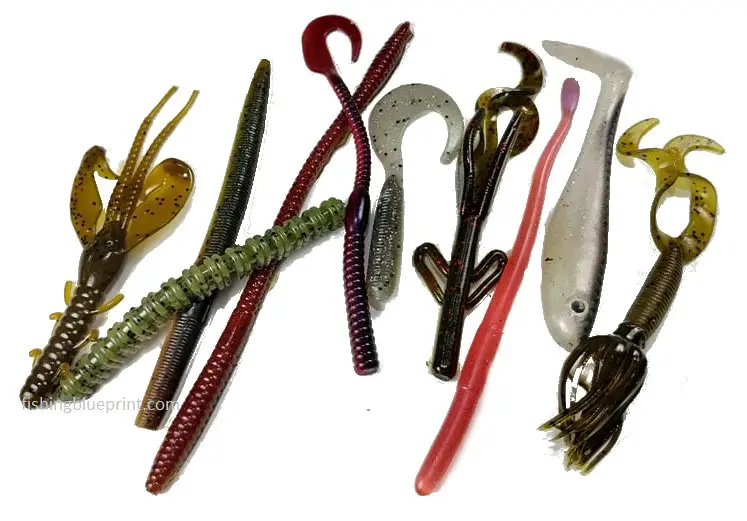
The best worm (or any soft plastic bait for that matter) is a bait that is going to get you the most bites on the specific lake you are fishing.
Now I know that sounds vague, but hear me out…
Your soft plastic bait should be determined by these 3 factors:
- Water Clarity
- Water Temperature
- Size of natural forage.
If the water is clear, then you should use a worm or bait that is more natural colored (greens and browns) between 4-6-inches in length.
If the water is stained dingy, then a darker colored bait that is a bit larger in size tends to attract more bass.
Highlighted below is a list of baits that are great for fishing the Texas rig.
Best All Around
Stick Worm - Gary Yamamoto Baits Senko Worm
The term “Senko” has become a general term for a soft plastic stick bait worm.
In 1997, Gary Yamamoto Custom Baits came out with the Senko and changed the fishing industry forever.
Yes, the Senko worm is without a doubt the most common stick bait brand, but more and more makers of stick baits are coming out every day.
Read More: I outline some of the best stick bait brands you may not have heard of… yet!
If you know what this bait is, you’ll know these baits are very straightforward to use.
These Senko worms are commonly regarded as “do nothing” or “dead stick” baits since they have no activity.
But they all have one thing in common: they don’t have tails or appendages to help them move.
They gain their action on the fall. A Senko will have a subtle shimmy when it’s falling weightless.
Most of the time bass will eat your lure as it’s falling in the water. If not, cast it out, count to 30-seconds and wait for it to rest on the bottom. Give a couple more twitches and wait a few more seconds.
You’ll probably feel a couple of taps on your line, you may even see your line moving away. Then set the hook.
When other lures fail to catch bass, your first option should be a Senko or a stick bait.
Anglers fish these baits several ways. They can be weighted or weightless
And they can be fished using several different techniques.
By far the most common way to fish a Senko/stick bait is by using a Texas rig.
Here a list of some of additional ways a Senko can be fished which I outlined in other articles and reports:
Each technique serves it’s purpose.
Tech Specs
- Length - 5 inches
- Recommended Hook Size - 4/0
- Scented -Yes
- Pieces/Bag - 10/bag
Best Finnese
Zoom Trick Worm
If you didn’t know, the Zoom Trick Worm is unique because it’s a beefier sized worm and it floats.
Largemouth bass go crazy for these plain-vanilla, do-nothing plastic worms.
When weightless Texas-rigged, the tail will float when using a light-wire gauge hook, and may be fished on or near the surface.
Alternatively, you can add a small bullet weight (1/16-to-1/8 ounce) and let the worm sink gently into the thick cover.
The 6-inch watermelon red flake variation is deadly in any season of the year.
Without a doubt, it’s one of the most popular and adaptable soft-plastic finesse baits on the market.
Tech Specs
- Length - 6.75-inches
- Recommended Hook Size - 4/0
- Scented -Yes
- Pieces/Bag - 20/bag
Editor's Choice Winner
Zoom Brush Hog
The best way to describe a creature is it’s a bait that imitates a little bit of everything.
To create their own unique creature that performs a variety of tasks, bait manufacturers have experimented with different body styles, shapes, appendages, and overall action.
One of the best creature baits on the market is the Zoom Brush Hog.
Simply put, the Brush Hog can perform in nearly any fishing situation. It catches fish in clear or stained water, and you’ll get bites in both heavy cover and open water.
The Brush Hog may appear out-of-this-world, but once in the water these soft plastic appendages flutter subtly as its being retrieved.
There’s no such thing as a bad way to fish these little baits. Anglers have used them for years and successfully caught bass using a variety of rigging methods.
A basic Texas rig is one of the most popular for the normal size Brush Hog, and is considered a standard rigging style
The vast majority of anglers believe it’s best to use a 1/4-ounce tungsten worm sinker when casting on open water or light cover.
Without impairing it’s motion, the weight allows the bait to sink gently, yet efficiently to the bottom.
Bass devour this bait when pitched into cover like trees, submerged brush, chunk rock, grass, and docks.
Don’t be shy to use a heavy 1-ounce flipping weight when flipping and pitching around floating mats, grass, or vegetation.
Tech Specs
- Length - 5-inch
- Recommended Hook Size - 5/0
- Scented -Yes
- Pieces/Bag - 8/bag
What Size Bullet Weight Should You Use For A Texas Rig?
The bullet weight you’ll use with a Texas rig depends a lot on three things: the depth of the fish, the rate of fall, and the thickness of the cover.
There are two primary types of tungsten bullet weights – lead and tungsten
For starters, the vast majority of tournament anglers will choose tungsten worm weight over the lead. Tungsten is approximately twice as dense as lead, which gives you a better “feel” of the structure you’re fishing over.
Furthermore, tungsten is about 1/2 the size of a lead weight, so it crawls over and through rocks and structures with ease.
Lead on the other hand is big and bulky, and since lead is soft, it will give anglers a “mushy” feel even when dragging you lure over rocks.
Unless you’re on a strict budget it is strongly recommended to go with a tungsten weight.
The weights range from 1/8 ounce to 1-1/2 ounces, and the depths are usually classified like this:
- 0-4 feet: shallow
- 5-9 feet: medium
- 10-15 feet: deep
- 16-25 feet: extra deep
Although it can vary according to other factors not mentioned below, here are some general recommendations for what size bullet weight you’ll need when you’re using the Texas rig:
- For slow-falling lures and shallow water: 1/8 ounce.
- For sparse covers or brush piles that are less than 20 feet deep: 1/4, 5/16, or 3/8 ounces.
- For thick bushes or bass that is holding on the bottom of water that is deeper than 20 feet: 1/2 ounce.
- For punching soft plastic through very matted vegetation: 1.5 ounces.
If you keep getting snagged, and you are certain you buried the hook point in the bait, then you MUST down size the weight in 1/4-ounce increments until you are no longer getting hung up.
Again, these are general guidelines, but these numbers do tend to work for many people who bass fish.
The price of tungsten weights have been dropping dramatically, making fishing with tungsten even more attainable than ever before.
Here are some tungsten worm weights for you to check out:
| # | Preview | Product | Rating | |
|---|---|---|---|---|
| 1 |

|
Fishfun Tungsten Bullet Fishing Weights, Insert Free Worm Sinkers, 12 Pack, 1/8oz, No Chip Black | No ratings yet | Learn More |
| 2 |

|
16 Pcs Tungsten Fishing Weights for Bass, Pitching and Flipping Sinker, Sizes 1/8, 1/4, 3/16 Oz... | No ratings yet | Learn More |
| 3 |

|
Reaction Tackle Tungsten Bullet Fishing Weights/Worm Sinkers for Bass Fishing - 1/4 June Bug | No ratings yet | Learn More |
#ad / Images from Amazon Product Advertising API
Is A Bead On A Texas Rig Necessary?
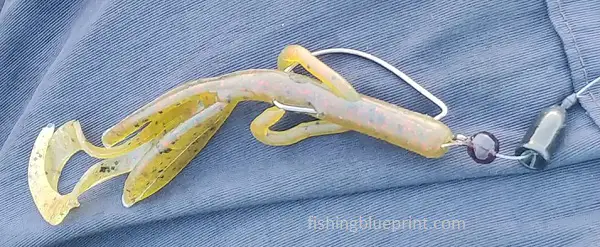
When utilizing this type of rig, keep in mind that the bead is optional. Some anglers (including myself) like the bead because it makes noise and is colorful, making it a little easier to see if the water is muddy or stained.
The bead also protects your knot. The weight can damage or fray your knot over time (especially tungsten weights), which then could cause a fish to break off when you set the hook.
On the other hand, other anglers dislike the bead because they feel like the presentation of the lure looks rather fake. Since most worms don’t “click,” this is a legitimate reason not to use the bead on a Texas rig.
Most anglers who use a bead will chose a glass bead that slides freely up and down the line, and slightly larger than the diameter of the weight, normally 6-9mm in size.
Personally, I always use a bead – every time. And if the fish are a little skittish, I’ll use a black or a brown bead instead one that is bright colored.
Ultimately, it’s your decision to use a glass or plastic bead on your rig.
The Best Hooks To Use With A Texas Rig
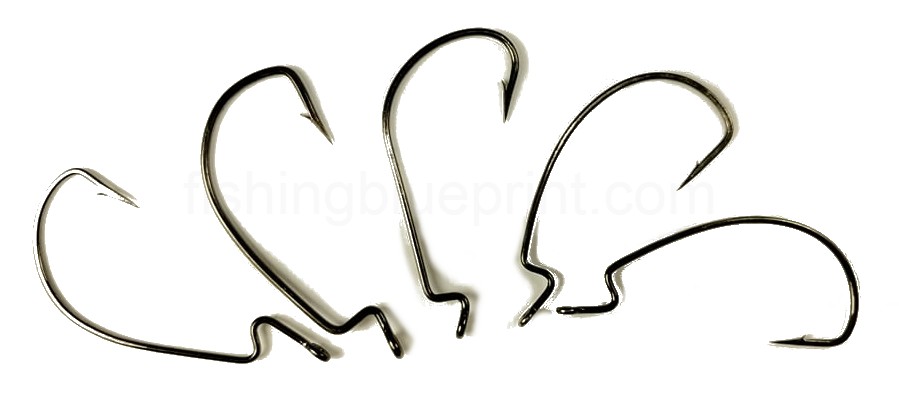
Mentioned earlier, the Texas rig involves a soft plastic lure, a hook, and a bullet-shaped sinker. In addition to these things, it also includes a pegging device, which we’ll get to later.
If you think about the Texas rig, it’s easy to understand that its key component is the hook. You can certainly play around with different hooks when using a Texas rig, but below are some general recommendations you can follow for the best results.
- For plastic lizards, 6-inch plastic worms, and Senko worms: 3/0 straight shank.
- For 7- to 8-inch plastic worms: 4/0 straight shank worm hook.
- For 10-inch plastic worms or longer: 5/0 straight shank.
- For craws and beaver baits: 4/0 extra-wide gap (EWG).
- For flipping tubes and creature baits: 5/0 EWG.
When it comes to pegging the weight, you can do this with a piece of rubber band, toothpick, bobber stop, or any of the commercial pegging devices now found in all fishing and sporting goods stores. When the weight is pegged, the slip sinker stays close to both the lure and the hook.
This is also an excellent idea when you wish to present lures in thick cover since the weight always remains close to the lure, which in turn will help pull it through the cover.
Sometimes, you’ll want to leave the sinker unpegged. Examples include when your fishing flipping tubes or ribbon tail plastic worms on the open water. In this case, the sinker slides away from the lure and creates a type of spiraling action for the tube, as well as additional tail action for the plastic worm.
Other fishing experts recommend the following tips:
- Small baits: 3- to 4-inch hooks
- Medium baits: 5- to 6-inch hooks
- Large baits: 6- to 12-inch hooks
The above is a little more “generic” in nature, but if you combine all of the information you’ve received so far about hooks for the Texas rig, you can come up with a combination that works best for you.
The Best Line Choices For The Texas Rig
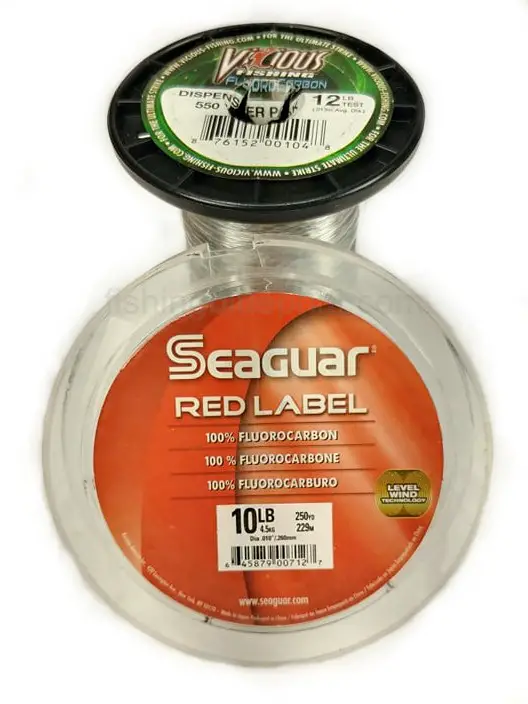
While you likely already know the three main types of fishing lines, let’s take a quick look at them anyway.
- Monofilament
Monofilament fishing lines are good for beginners, mostly because they’re a lot less expensive than other types of lines. If you’re trying to reel in a fish that is fighting particularly hard, the fact that the line is more forgiving can make the process a lot easier for you.
This type of line is also more abrasion-resistant, but there is one characteristic that makes it not so great for the Texas rig: it floats. This is why, though monofilament lines are good choices when using topwater bait or Carolina-rigging leaders, their buoyancy and the fact that you can’t really “feel” the rig make them rather inappropriate for the Texas rig.
- Fluorocarbon
There are lots of things that make fluorocarbon lines exceptional: it is sensitive, doesn’t stretch as much, and it doesn’t float. The drawback is that it’s a little more expensive than other types of lines, but it is worth every penny you spend on it.
With fluorocarbon lines, you get a better “feel,” more direct hooksets because they don’t stretch, and what makes this even more fantastic is your bait will not float up whenever you’re fishing across the bottom.
If you’re going to use this type of line, make sure you know what type of cover you’ll be fishing around before you buy it. More cover and shallow depth require a line with larger test and diameter.
About the only negative aspect of a fluorocarbon line is that it is less abrasion-resistant than other types of lines.
- Braid
Braid lines are extremely strong. It is not, however, translucent like monofilament and fluorocarbon lines are, so it’s best not to use it in sunny conditions when the water is clear.
Braid is small in diameter and offers little to no stretch, but it’s the perfect type of line when you’re fishing in heavy cover and around matted vegetation.
These things being said, when you’re bass fishing with a Texas rig, many anglers use 6-pound fluorocarbon to 65-pound-test braid. This will depend on the situation at hand, but this is a good general rule to follow when deciding on your line for your Texas-rigged fishing lure.
By the way, a lot of bass anglers have asked “What is the best line that keeps my fishing line from twisting?” This secret information only the local guides and shops know about I just published answers that question and a whole LOT more! You can grab it FREE here!
Click HERE to get all the information the Pros don’t want you to know about!
The Best Knot For A Texas Rig
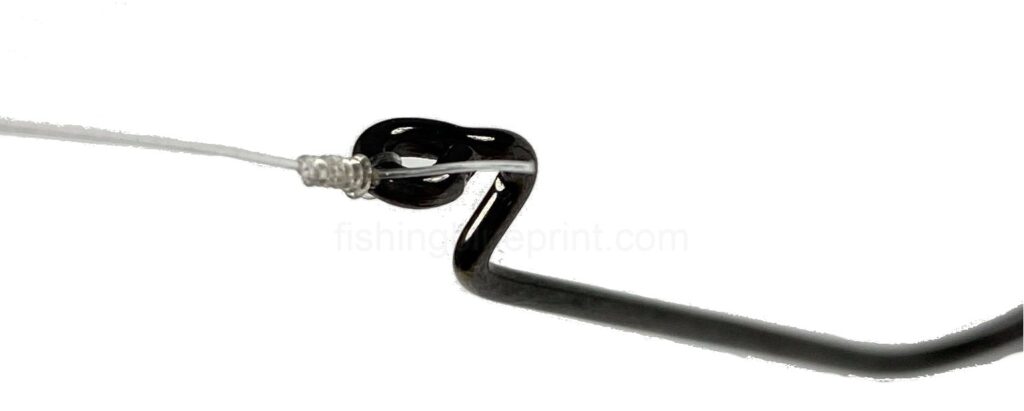
When attaching your hook to your mainline or leader, you’ll need to know two knots.
I’m going to show you the two knots that I use every day when fishing a Texas rig.
These knots are important to know since they are simple to tie and will help you catch more fish.
Palomar Knot – Hands down the best knot to tie using a braided line is the Palomar knot. This knot is strong and super easy to tie. The Palomar knot has also been known to cast incredibly easily as well. Works great with
Double Loop Uni Knot – This knot is INSANELY strong and is gaining enormous popularity. This knot has two additional loops around the eye of the hook instead of the traditional single loop – this prevents breaking off your line on powerful hooksets. This is a great knot if you’re fishing deep or with a heavy weight.
Alberto knot – One of the most popular knots for fishing in freshwater, the Double Uni knot is used when tying braid to either monofilament or fluorocarbon line. It’s very easy to learn and incredibly strong.
Best Casting Rod (Editors Choice)
St. Croix Mojo Casting Rod
About St. Croix Mojo Bass Rods...
For the serious angler who demands high-performance and value the St Croix Mojo Bass casting rod gives it to you all in a single package.
In addition, anglers love St. Croix’s Bass Mojo rods because of the high-modulus, high-strain graphite fiber blanks, meaning it produces a rod that sensitive, lightweight, and has outstanding durability.
Even if you have arthritis you can feel soft bites.
So those that choose not to go for top of the line rods, as this price range you can get 3 amazing quality Mojo rods for the price of one. It’s not surprizing that many anglers go on to buy multiple Mojo rods!
The weight is evenly distributed and feels comfortable in your hands so you can cast all day long and not have a tired arm.
If you’re a serious weekend angler, the St. Croix Mojo Bass rods are a fantastic choice for you.
Tech Specs:
- Length - 6'8''
- Power - Medium
- Tip Action - Extra Fast
- Line Weight - 8-14-pound test
- Lure Weight - 1/4-5/8 -ounce
- Peices - 1
- Model Number - MJC68MHF
- Warranty - Backed by a 5-year warranty, through the St Croix Superstar Service Program
Best Spinning Rod (Editor's Choice)
Dobyn's Fury Series Rod
About Dobyn's Fury rods...
Without a doubt, the Dobyns rod company is one of the best manufacturers of spinning rods on the market.
The Dobyns Fury Rod would have earned it a higher spot however it is offered by few retailers and is relatively hard to find…
Luckily they also sell their rods on Amazon.com
I have owned a handful of these rods in the past and I will vouch for these rods hands down.
Dobyns Rods uses ultra-high modulus graphite blanks to create unmatched performance and give the angler a bite sensitivity that a $300 plus rod would give.
Each Dobyns rod Is paired with premium line guides that are even wrapped with Kevlar!
The reel seat is incredibly lightweight and the rod feels very balanced in your hand.
The Dobyn Fury spinning rod is a fantastic rod that is priced incredibly fairly.
Tech Specs:
- Length - 7'0
- Power - 7'0
- Tip Action - 7'0
- Line Weight - 6-12-pound test
- Lure Weight -1/8-1/2-ounce
- Peices - 1
- Model Number - FR 702SF
- Warranty - Limited lifetime warranty
The Best Presentation And Retrieval Techniques For The Texas Rig
What is a Texas rig for fishing – Under Water Footage
When you use a Texas rig, your best bet is to fish slowly at the bottom of the water. This way, bass that are lethargic or inactive are still attracted to the bait because it is often dropped right in front of them.
As far as presentation and retrieval techniques go, here are a few of them to consider:
- Dragging Retrieve
When you’re fishing around rock bars or gravel points, this is a good technique to use. Just throw out your Texas rig and let it sink to the very bottom on a slackline.
Then, the lure is dragged slowly across the bottom, with a slow upward pull using the tip of the rod. Drag it about two to three feet at a time, then reel up the slack and repeat.
When you’re using this retrieve, it’s common to feel the vibration of the bait as it drags across the content of the bottom through the rod. When the fish grabs ahold of it, you’ll see your line start to swim away or feel the weight of the fish on the bait.
- Simple Swim
Perfect for fishing around pieces of hard structures or weed flats, active bass usually do well with this type of retrieval. It is also a very simple method because you simply cast the bait out and wind it back in using different speeds.
Use the tip of the rod to create movement so that the bait runs a little more erratically, increasing the odds that you’ll trigger some strikes. Use soft baits with built-in swimming action so that they look more lifelike to the bass.
- Flip and Pitch
Perfect for using with a Texas rig around cover, this is a very common technique that can be done in tight quarters. This includes around bushes, docks, trees, and many other areas.
For this technique, you simply hold the bait in one hand, swing your Texas rig in a pendulum toward the target, and voila – the bait is soon right in front of the bass. It takes a little practice, but it shouldn’t take long for you to master this technique.
After you cast the line, try to hop the bait through the cover so that the fish can be coaxed into biting. In fact, you can use this technique all year long.
How Is A Weighted Texas Rig And A Weightless Texas Rig Fished Differently?
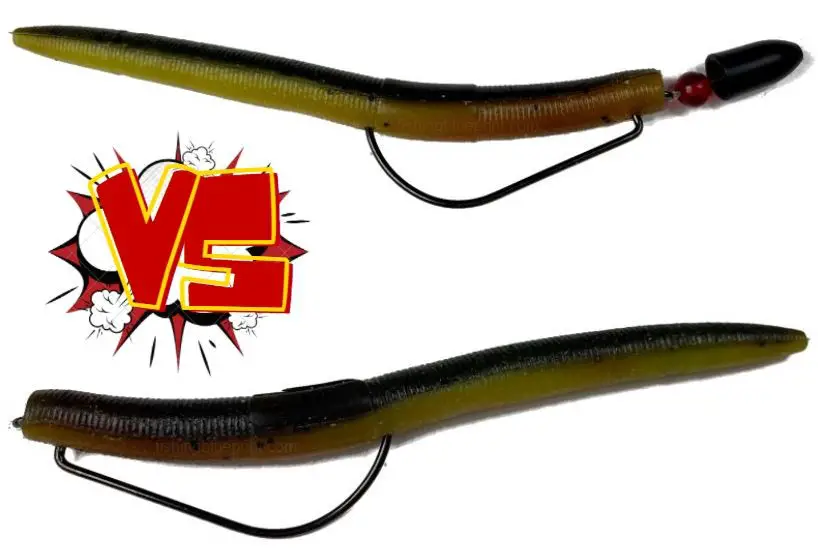
When you’ve decided to use the Texas rig for bass fishing, one of the decisions you’ll have to make is whether or not to use a weight. Believe it or not, that tiny piece of metal can affect how many fish you catch on any given day.
Here are a few of the differences between using a weighted versus a weightless rig:
- Weighted Texas rig. One of the main advantages of adding this bullet-style weight above the hook is that it is effective in most circumstances and conditions, including punching vegetation, flipping, long-casting, and so on. The size of the weight will depend on the cover thickness, wind, depth, and a few other factors. It is ideal for a heavier and quicker Texas rig.
- Weightless Texas rig. Though not as common, this option is still used by many bass anglers. The bait will usually flutter or glide its way to the bottom when it’s weightless, and it is especially useful when the water is clear or cold. With a weightless rig, your fish won’t get spooked as easily because they can see the lure even from far away.
So, there you have it. Weighted rigs are best with thick or murky cover and in lots of different conditions, while weightless rigs are better when the water is clearer and there aren’t as many obstacles for the fish.
The Best Locations And Structures To Fish A Texas Rig

What is a Texas rig for fishing – Where to fish a Texas rig
One of the best reasons to choose a Texas rig is its versatility. For the most part, whenever you decide to fish with soft plastic lures and you’re bass fishing, the Texas rig is perfect.
This is because this rig can be used almost anywhere in just about any body of water. This includes any time of the year and in all types of water depths.
When you combine these things with the fact that the Texas rig is super easy to tie and get all set up, it’s simple to understand why it is so popular with bass anglers.
You already know that the Texas rig works best with soft plastics, but the fishing environment you’re fishing in can dictate what type of soft plastic you use. This includes the following suggestions:
- Thick vegetation: try using something small like a creature bait or even a crawdad. The smaller the profile is, the easier it will be for your bait to go through the vegetation and get to where the bass are.
- For nesting areas and aggressive male bass: try a Texas-rigged lizards, or Texas-rigged crawdads if you’re fishing around the nests. When you use the lure to get around the spawning grounds, a protective father bass is very likely to attack.
- For fishing around docks: try using a Texas-rigged crawdad, tube, or creature bait to get under the docks. Large bass are often found around the pilings of a dock or bridge, making it easier to attract them.
If you’re wondering about the Texas rig and the time of year you’re fishing, here are a few other things to consider:
- You can fish a Texas rig slowly on very cold days to attract lazy bass that are freezing.
- You can fish a Texas rig in the shallows during spawns when it’s mid-spring.
- You can fish a Texas rig on very hot summer days.
In other words, the Texas rig is great for fishing bass all year long in nearly all conditions and locations.
Environmental & Seasonal Factors to Consider

What is a Texas rig for fishing – Environmental/seasonal factors
We’ve been talking about the many benefits of a Texas rig for bass fishing. Now let’s consider different environmental conditions and how they affect the efficiency of the Texas rig.
- Seasonal considerations: Spring. Some of the tips to catch more bass in the springtime with a Texas rig include using a weightless worm, a 6.5-foot medium-action spinning outfit, a fluorocarbon line with a 10-pound test, and “hot” colors such as yellow, bubblegum, and even white. You can also use more natural colors such as pumpkin and watermelon. Fishing enthusiasts swear by the weightless worm suggestion and worms that are 6 to 8 inches in length. This way, you can often see the fish come up and bite it. You should also cast right to the cover and not past it because this often results in an immediate strike. In addition, sometimes a “skipping” presentation works well, as does, sort of like skipping stones across a creek.
- Seasonal considerations: Summer. While the spring months are usually best for catching bass, don’t give up on bass just because it is June or August. While you can still catch bass with jigs or crankbaits, you can also do it with soft lures such as Senkos and others. Keep in mind that by August, fish have seen a lot of baits and hooks and therefore aren’t as aggressive as they are in the spring. This means that a subtle lure – such as a big curly tail or ribbontail – might be a good choice. A black or blue flake lure is also effective for summer months. Bigger baits, such as 6- or 7-inch soft lures, also work best during this time of the year.
- Seasonal considerations: Fall. Bass are getting fat. Why? They are chasing shad to the back of the waters and enjoying quite a feast. Because of this, fishing around the mouths of creeks close to the banks when it’s fall is suggested. You can also use lipless crankbaits, which are good in areas with no vegetation and close to deep-water hideouts; Texas-rigged minnow baits, specifically the zoom fluke-style lures that mimic the type of bait that fish love; and buzzbaits, which tend to lure the bass out of hiding spots and spots with a lot of vegetation.
- Seasonal considerations: Winter. Search baits in wintertime usually run deep, and some of the lures effective for finding bass include a flutter spoon, which you can drop over your target and wait for the bite; and a dropshot, which is especially helpful when fishing from the bank. You can also use a Carolina rig for an effective lure.
- Clear skies versus cloudy skies. When the days are sunny, you can target the fish where they have been moved into the shallows. The best baits for this scenario include buzz baits, spinnerbaits, floating worms, topwaters, and so on. On cloudy days, topwater lures work best, but you can also use buzz baits and others if you like.
- Windy versus calm. While cover is an important consideration when choosing lures, wind and water are almost as important. For windy conditions, try using spinnerbaits, which many bass anglers consider top-notch for these conditions. You can also use buzzbaits and frogs and toads.
- Clear/slightly stained water versus muddy/dingy-colored water. If the waters are clear, you should stick with either natural or translucent colors. Natural colors include browns, whites, grays, green pumpkin, and watermelon. For muddy or unclear waters, try either natural colors or dark colors such as black and blue.
FAQ

How deep can you fish a Texas rig?
Fishing in about 20 feet of water is about maximum amount of depth you should fish a Texas rig in.
Unless you’re fishing a big creature bait, the heavier the weight will reduce the action of smaller baits.
If you want to fish in deeper water you should consider fishing with a football jig or with a Carolina rig.
Is a Texas rig good for saltwater fishing?
Absolutely! You’ll just need to use a saltwater friendly hook and soft plastic bait that is good for saltwater fishing like the
Here are some saltwater hooks for you to check out:
#ad / Images from Amazon Product Advertising API
Here are some saltwater softplastic baits for you to check out:
| # | Preview | Product | Rating | |
|---|---|---|---|---|
| 1 |

|
Lanmoon 100pcs Paddle Tail Swimbaits Lures, Soft Plastic Fishing Lures Kit, 2.75" Bass Fishing Bait... | No ratings yet | Learn More |
| 2 |

|
Z-Man Dmin5-57Pk4 Diezel Minnowz 5" | No ratings yet | Learn More |
| 3 |

|
Soft Plastic Fishing Lures, 24Pcs Paddle Tail Swimbaits for Bass Fishing, Bass Fishing Lure Swim... | No ratings yet | Learn More |
#ad / Images from Amazon Product Advertising API
Checkout These Other Texas Rig Fishing Articles...
- What Is a Texas Rig for Fishing? [Ultimate Guide Answering: How Do You Fish A Texas Rig, Best Setup, Hooks, Worm, And Much More]
- How To Fish A Senko Texas Rig (Easy Beginner’s Guide with Pictures)
- [Bait Battle] Texas Rig vs. Carolina Rig – What’s the Difference & When To Use
- REVEALED! Texas Rig Rod Specs You Need To Know – Length, Power, Weight, And Reel
Getting Started With Bass Fishing? Read These Articles...
- How To Catch Bass – 57 Fool-Proof Methods To Start Bass Fishing [Made Easy!]
- 5 Best Bass Baits Every Angler Must Own (Are You Missing Out?)
- Best Bass Fishing Lures 2024: Comprehensive Buyers Guide
- Bass Fishing Rod Secrets: Helps You Chose The Right Type Of Rod Faster!
- 21 Tips To Choose The Best Bass Fishing Line
- WARNING: Don't Even Think About Trying To Buy Your Fishing Reel Until You Read This...
- Water Clarity Guide for Bass Fishing [Blueprint Revealed]
- Top Secret! Catch Bass From the Bank Every Time
- 25 Night Bass Fishing Tips and Tricks
More articles just for you...
Funny Fishing Rules, Laws, and Regulations 2025
Crazy Fishing Laws That Will Blow Your Mind! #7 is INSANE! Strange Fishing Regulations and Laws As silly as hook and rod limits may seem,
EXPOSED! How To Use A Spinnerbait The Right Way for 2025
Are You Wondering How To Use A Spinnerbait? Or How To Work A Spinnerbait Over Grass, Logs, or Points? Well, All These Questions Are Answered
EXPOSED! Best Crankbait Colors for 2025 [Which to Buy & Avoid]
What color crankbait to use? Crankbait Color Chart I just love going into a Bass Pro Shops store and just staring at all the walls
Best Underwater Dock Lights For Fishing – 2025 Buyers Guide
Night Dock Light Fishing For Beginners Dear fellow angler, Does this sound like you? You’re someone who loves fishing but just wants to escape the
15 Best Deep Diving Crankbaits [2025 Buyers Guide – Which to Buy & Avoid]
A Complete Buyer’s Blueprint On The Best Deep Diving Crankbaits for Bass, Walleye, or Striped Bass On The Market Today Fishing deep diving crankbaits can
